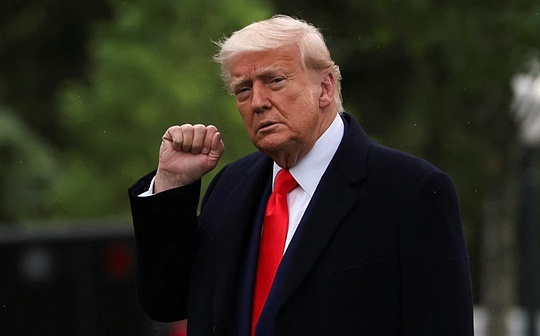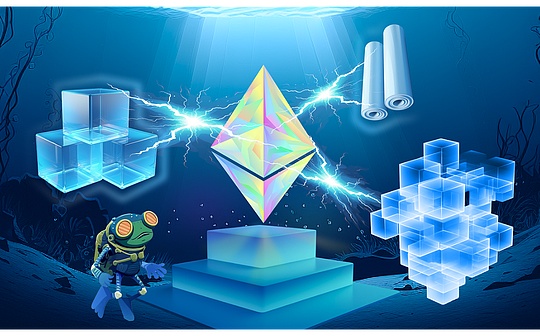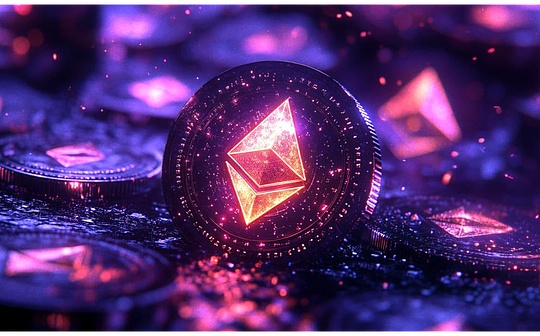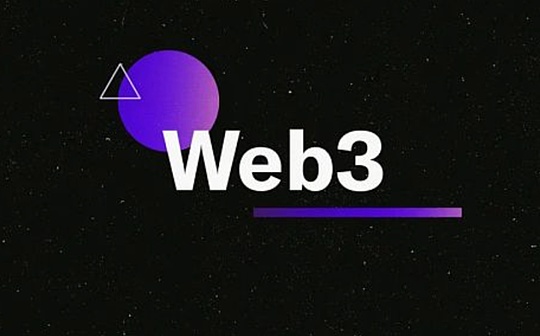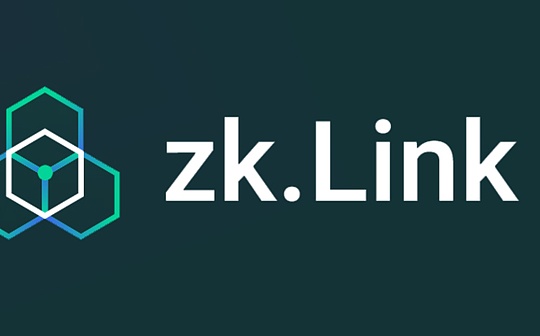
Author: Jennifer Obem & amp; AJC, MESSARI research analyst; translation: Bit chain vision Xiaozou
Abstract:
· ZKLINK solves the challenges of blockchain fluidity and technology stack fragmentation by unifying Layer-2 (L2) network and Layer-1 (L1) network.
· Zklink provides two core solutions: zklink nova and zklink X.Both solutions use zero -knowledge proof (ZKP) technology to provide unified access to users and developers.
· ZKLINK Nova is a universal Layer-3 (L3) network. It integrates the assets, liquidity and DAPPS of Ethereum L2S into a safe and efficient single platform of EVM.
· ZKLINK X is an expansion engine specific to the application for multi -chain DAPP deployment, liquidity aggregation, and performance improvement across various blockchain networks (including L1S and L2S).
· There are more than 300 million US dollars of capital bridges to ZKLINK Nova, making it the largest L3 network with the largest total value of the bridge.
1Background introduction
The cost of Layer-2S to expand Ethereum is as an isolated sub-ecosystem, which weakens the network effect of Ethereum.The difference between each L2 is very large, they use different technical stacks (for example, OP Stack or ZK Stack) and different proof technology (for example, fraud or effective proof).Therefore, L2S may have the disadvantages to further cause Ethereum liquidity fragmentation and complicate DAPP development.They also weaken the user experience, because the transfer of crossing L2 is time -consuming and expensive.Today’s blockchain pattern is characterized by isolated and independent. Except for asset transfer and cross -chain message transmission through bridges, it is almost impossible to convey value.
ZKLINK aims to unify L2S and L1S to enhance user experience through zero -knowledge proof (ZKP) and promote secure DAPP development.Zklink provides two core solutions:
Inzklink nova: This is a general L3 that focuses on solving the liquidity and asset fragmentation challenges of Ethereum.
Inzklink x: For extended engines for specific applications, support customized multi -chain DAPP development, connect L2S and L1S.
ZKLINK has become a multi -chain transaction solution in 2021.It uses ZKPS to provide users with reliable access to aggregate liquidity, and enables developers to quickly deploy customized and secure financial applications such as DEXS and AMMS.Over the years, ZKLINK has developed into a polymer that span the assets, liquidity and applications that spans each L1 and Ethereum L2, forming a interconnected blockchain pattern.ZKLINK Labs (ZKLINK’s development team) led by Vince Yang has received $ 23.1 million in financing from private equity investors, and has completed a community sales, providing financial support for ZKLINK’s development.
On March 11, 2024, Zklink Nova’s Layer-3 public online online supported 9 networks including Ethereum.It provides a interoperable platform for users and developers to integrate liquidity and assets from Ethereum L2S.Users can only deposit assets on Zklink Nova to achieve interaction with all associated L2S assets and DAPP. These networks will not have duplicate DAPP interaction, but the cost will become lower.Similarly, developers can quickly deploy more capital efficiency applications on L3, and use the liquidity of related L2S without deploying multiple DAPPs.Since its birth in early March 2024, ZKLINK Nova has attracted more than $ 300 million in total lock value (TVL), which shows the potential demand for the unified Universal L3 platform.ZKEX is the first decentralized exchange (DEX) built by ZKLINK X.As of March 2024, ZKEX operated on the main network of V2 Alpha, with a transaction volume of more than $ 42 million.
2,technology
(1.zklink nova
Zklink Nova is a zero-knowledge Rollup (ZK-Rollup), which runs as a universal L3 built on Ethereum and its L2S.It uses ZK Stack and Zklink Nexus technology to aggregate liquidity and assets on the related network.Due to its modular design, it also provides customized and scalable DAPP deployment environment.Zklink Nova’s modular architecture includes the following four floors:
Sort
The main task of the sorting layer is to monitor the deposit on the chain in the L3 smart contract, maintain the state of L3, and organize transactions to process and prove the generation.Users can deposit assets into smart contracts deployed on all levels, or directly deposit into L3 sorters through RPC services, thereby interacting with Zklink Nova.Zklink Nova’s sorter records the transaction input transaction according to the requirements of the L3’s certification system, and deletes unqualified transactions at the same time.The approved transaction is divided into several small pieces, which are processed every two seconds in the ZKEVM of L3.The transaction block is further compiled into a transaction package to minimize the cost of interacting with the settlement layer.When writing this article, the sorter of the protocol is centrally managed by the project team, but the long -term goal is to use a decentralized sorter solution, such as Espresso, Astria, and Fairblock.
implement
Update the transaction of the L3 state is performed at this layer.ZKLINK Nova uses ZK STACK’s zero -knowledge Ethereum virtual machine (ZKEVM) to perform transactions.ZKEVM provides a safe execution environment for Zklink Nova’s smart contract, using ZKPS verification program to perform every step.Therefore, the L3 can execute transactions using ZKP computing verification in an EVM compatible environment, enabling developers to easily deploy DAPPS to the L3 on Ethereum and other L2S.
Settlement
Zklink Nova’s dedicated settlement framework ZKLINK Nexus can settlement across multiple L2 and Ethereum, which is different from the traditional settlement of ZK-Rollup on Ethereum.In this way, the L3 can effectively aggregate all user deposits into smart contracts on other L2 without re -calculating proof.Due to the unrelated characteristics of its technology stack, ZKLINK Nova can be connected to all Ethereum L2S, no matter what the technology stack is (for example, ZK or OP L2S).In order to cross multiple chain settlement transactions, ZKLINK Nexus uses the multi -chain status synchronization mechanism. This is a settlement framework that entrusts the proved responsibility to a chain and communicates the chain status to other chains.
· Choose a associated L2 as the “main chain” to verify and execute ZKPS and ensure the consistency of the transaction on the chain.
· Other associated L2 is used as a “auxiliary chain”. It only needs to synchronize the status calculated by the contract of the L3 to the main chain without calculating any ZKPS.
When writing this article, Linea is the main chain of ZKLINK Nova because it executes ZK-SNARK to prove and has the ability to quickly settle on Ethereum.The L3 also supports Ethereum as an auxiliary chain, and also supports the following L2S: Manta, Mantle, ZKSYNC ERA, Arbitrum, Blast, Optimism and Base.
When the sorter submits a transaction package and the ZK certification to the main chain for verification, the settlement process begins.Use Zklink Nexus’s multi -chain state synchronization. The auxiliary chain sends the synchronous hash value to the main chain through the standard Rollup bridge to ensure the consistency of the proof and complete the verification process.
>
Building a multi -chain Rollup will bring the risk of deposit fraud.Malicious sorters may report false deposits on the auxiliary chain to the main chain, causing user funds to lose.
To alleviate this situation, in addition to the standard ZKP verification process used by typical ZK-Rollup, the status synchronization stage also contains an additional transaction verification layer.This additional verification layer confirms the real -time data submitted by the sort to the main chain to the synchronous hash value of the periodic transmission of the auxiliary chain.Once the verification is completed, the main chain will be allowed to settle, resulting in soft settlement.The transaction packet root is then distributed to the auxiliary chain for withdrawal, thereby protecting the risk of fraud from fraud.
Data usability
Transaction and status conversion data can be accessed on the data availability (DA) layer.As of writing this article, ZKLINK runs as a validum, and has stored transaction data under the chain through the data availability committee (DAC).DAC maintains the transaction data of the L3 and its status historical copy, and stores transaction data in an effective way, especially for ZK-Rollups, which also generates proved verification costs.However, the security provided by DACS is lower than the external DA solution protected by a dedicated DA network.Therefore, Zklink Nova plans to use external DA solutions in the future, such as Celestia and EIGENDA.
>
Asset aggregation on zklink nova
To visit ZKLINK Nova, users must first receive the asset from the Ethereum and other related L2S bridges through the standard Rollup Bridge to the L3.Once the asset bridge receives ZKLINK Nova, these assets can be aggregated into interoperable transactions.The tokens with the same value from different networks can be merged into a single -generation currency to unify liquidity.ZKLINK Nova uses ZK-Snarks and ZKLINK NEXUS (synchronization of multi-rollup status) from all related networks to aggregate assets.These functions allow users to make deposits and bridges:
· ETH is transferred from various related networks to the L3.Uniform native assets allow to withdraw money without a third -party bridge, similar to a cash withdrawal from a centralized exchange, but there is no risk of trading opponents.
The native assets of other L2S (for example, ARB from Arbitrum) transferred to the L3.This allows interoperability transactions of native L2 assets on Nova to improve capital efficiency and support new DEFI use cases.
· The stablecoin issued on different networks has become the same stablecoin on the L3, which simplifies the use of stable coins while minimizing the GAS fee.
existzklink novaMerged tokens
The same value and type of assets on multiple L2 have different token addresses.For example, there are two unique addresses from the ETH from the ARBTRUM and Optimism Bridge to ZKLINK Nova.In order to allow users to interact with the ETH of these two network bridges as an asset on the L3, the assets of two different addresses must be merged into one asset.
In order to solve the problem of incomplete assets, ZKLINK Nova uses an upgraded token merger contract, which is managed by the governance committee and security committee.The contract allows Zklink Nova to merge the same value to a tokens.Users with different addresses from different addresses from multiple networks can lock the source tokens through the tokens on the source chain to receive derivatives equivalent to assets as ZKLINK Nova locking assets.Users can also redeem the tokens through the token merger Burn derivative equivalent.However, the agreement has applied the upper limit of the deposit on the supported assets, and it can lock the source to the source to use it as a guarantee measure.
The change of the token merger contract was proposed and implemented by its management agency (governance committee and security council).These changes may include but not limited to:
· Upgraded token merger contract
· Added the merger support for a source tokens
· Change the upper limit of the deposit that supports assets
· Lock or unlock the source tokens on the source chain
Although the governance committee launched a 2/3 multiple signatures to launch an upgrade proposal to the token merger contract and bid it, the Security Council reserves the right to veto such proposals.The actions of the Security Council’s ultimate supervision and management committee reserved the right to implement low -risk upgrades to the token merger contract.
(2.zklink x
ZKLINK X is a specific application engine that is used to deploy high -performance applications across multiple networks (for example, financial applications like AMMS and DEXS).With the emergence of cross -chain bridge connection solutions that are trying to connect to these networks, the interoperability between L1 and Ethereum L2 continues to improve.However, users still face challenges to transfer and manage assets with different networks with different technology stacks and tools.Similarly, developers must deploy applications on multiple networks with different execution environments, which sometimes requires technical knowledge related to various programming languages and tool infrastructure.
ZKLINK X simplifies the development process of DApp, and provides developers with a unified point to deploy applications, and can access extensive liquidity across multiple networks.It enables DAPP users to easily across L2S and L1S access, transactions, and managing their assets through a single capital platform.ZKLINK X is a modular deployment solution that allows developers to easily customize the App Rollups of cross -execution, settlement, DA and sorting layers to meet different application needs.Therefore, developers can deploy high -performance applications in the following methods and customize the above components:
· Use decentralized sorters, such as Espresso, Astria, and Fairblock.
· Use ZKLINK’s specific transaction ZKVM to execute transactions, which is designed for high -performance financial products such as CLOB, AMMS and DEXS.
· Settlement transaction to Zklink X’s dedicated settlement framework: nexus or Origin.Using Nexus, transactions can be settled on Ethereum and its L2S, and ORIGIN can be settled on Alt L1s such as Avalanche or Solana.In addition, Nexus verifies the transaction status of all associated L2S through the multi -chain status synchronization mechanism, while Origin verifies the transaction status of all related L1S and L2S through a lightweight Oracle network.
· Use external DA solutions (such as CELESTIA and EIGEN DA) to store transactions and status data.
A noteworthy specific application of ZKLINK X is ZKEX, a decentralized exchange, which has the aggregation liquidity of L2S such as Alt L1S and Starknet such as ALT L1S and Starknet from BNB smart chains.Users can trade multi -chain assets from supporting the network on this application without the need for bridges to receive multiple assets.Users can also enjoy a simple and smooth user experience, because they can save these multi -chain assets from the DEX from a self -custody wallet (such as Metamask).
3, Token economics
ZKLINK’s native currency ZKL is planned to be released in 2024, but the exact release date has not yet been announced.ZKL will grant users to visit ZKLINK ROLLUP infrastructure services and grant token holders’ right to govern the ZKLINK project.The function of this asset plan includes:
· Pledge: PROVERS (proof) will pledge ZKL to access ZKLINK’s proof of generating market, DAPPS requests proof of the market to generate service.Subsequently, the proofer can get ZKL rewards for completing the task.
· Payment: ZKL will become the main payment tokens in ZKLINK proved to the production market.DAPPS, which uses ZKLINK ROLLUP infrastructure, will pay the ZKL tokens to the proofer providing ZKP -generated services.In addition, the specific application of Rollup, which is constructed with ZKLINK ROLLUP infrastructure, will pay ZKLink DAO (project proposed governance organization).These DAPPS may also use ZKL to pay for the cost of specific internal products.
· Governance: Through the future ZKLINK DAO, ZKL token holders will exercise the right to develop ZKLINK’s development direction and development decision -making.
>
ZKL will launch up to 1 billion tokens without inflation.The distribution of tokens is as follows:
· Community vault (~ 29.88%): In the future, the community vaults managed by ZKLINK DAO will control the most important part of total token supply.About 20.75%of this distribution will be published through TGE, and will be issued to the early adopted as a reward distribution, as well as a contributed developer as a community development bonus and BUG bonus reward.In addition, 9.37%will be a BUG bounty and will be issued monthly on a monthly basis.The remaining 79.25%will be allocated by DAO in the future.
· Ecological system development (22.5%): This part of the distribution is dedicated to the development of the ecosystem and will be used to fund the growth initiative and development plan.20%of them will be distributed through TGE, and the remaining 80%will be issued monthly in two years.
· Early private equity buyers (20.55%): This part will be assigned to private equity investors in all rounds of investment.About 38.93%of the allocation will be left to the pre-seed investors, with a lock-up period of 5 months, and distribute in accordance with the 27-month linear distribution plan.In addition, about 37.98%will be left to seed wheel investors, with a lock -up period of 4 months and distributing it in accordance with a linear distribution plan of 27 months.About 22.87%of the remaining 22.87%will be retained to private investors. There is a three -month lock -up period, and it is distributed in accordance with the 27 -month linear distribution plan.
· Team and consultant (20.00%): This part will be assigned to the Zklink Labs team and project consultant.This distribution has a 6 -month lock period, and will be distributed monthly according to a linear distribution plan of 3 years.
· Liquidity reserve (4.00%): This part will be locked in the liquidity pool of TGE.The distribution of 50.00%will be issued in the TGE and a monthly distribution of a monthly basis for one year.
InCoinlistSale(~ 3.13%): This part will be assigned to the coinlist community sales participants in ZKLINK.The distribution of 30.00%will be unlocked during the TGE period, and then follows the 9 -month linear distribution plan.
4As well asAggregation parade
Shortly after the launch of the main network in March 2024, ZKLINK Nova cooperated with many Ethereum L2S (Arbitrum, ZKSYNC, Manta, Mantle, and Linea) to launch Aggregation Parade.The plan aims to increase the ecological participation on ZKLINK Nova. Participants who perform the following operations on the L3 will receive Nova points (NP) rewards:
· Bridge: Users must store at least 0.1 ETH to the L3 from the supported L2S to accumulate NP points and receive soul -bound tokens (SBT).Early deposits can get additional points.
· The NFT recommendation plan participating in ZKLINK: Users can recommend the other three users to the L3 to get one of the four different trademark NFTs.After obtaining all four different trademark NFTs, users can upgrade the original SBT reward to Nova Lynks NFT.Nova Lynks NFT holders are eligible to share part of the 10 million ZKL community pool.
· Pledge: Users can pledge supported assets on this network, such as ETH, WBTC, USDC, and other L2 tokens, liquidity pledged tokens and liquidity re -pledged token to accumulate NP points.The pledge volume is based on the token classification multiplication plan, the group pledged Chengbi monument, and the early bird reward plan for early pledged participants.
Since the launch of the main network in early March 2024, ZKLINK Nova has attracted more than $ 300 million TVL, which marks the growing demand for the unified Universal L3 platform.
>
As of writing this article, there are more than 60 projects in the Zklink Nova ecosystem, covering DEFI, tools, social, games and NFT fields.ZKLINK Nova continues to promote the participation of the ecosystem through reward and funding planning and initiative. These plans and initiatives provide support for developers, users, and L2S deployed on the L3.
After TGE, the early ecological participants will receive ZKL token awards based on the loyalty integration system launched in August 2023.ZKLINK Labs also launched a liquidity alliance program in December 2023 to cooperate with Skynet, Asymmetries, EF, Keyrock, Wintermute, Selini and Flowdesk to provide liquidity for DEFI applications on ZKLINK Nova.As a return on liquidity, the market businessman will also share the uninterrupted part of the ZKL token supply.
On March 8, 2024, Zklink Labs announced its developer funding plan.The project will support the development of applications on the L3, focusing on focusing on DEX-AMMS, lending platform, data indexer, prophet, Bridges and income optimizers.ZKLINK LABS reserves 20 million ZKL (accounting for 2%of the total token supply) for the funding plan, and each successful applicant will receive up to 50,000 ZKL funding rewards.
In order to encourage the continuous research of L3 development, ZKLINK also regularly organizes the L3 summit event to gather the L2S and other blockchain infrastructure projects in the Ethereum ecosystem.As of writing this article, Zklink has successfully held two L3 summits. The first summit was held in November 2023, and the last summit was held in February 2024.These summits have received the participation support of the outstanding L2 and infrastructure teams, such as Arbitrum, Celestia, Eigenlayer, Kakarot, Linea, Polygon ZKEVM, Manta, Polygon, Scroll, StarkNet, TAIKO and ZKSY NC.
5, Network activity
>
On March 14, 2024, ZKLINK Nova launched the points event Aggregation Parade to issue points rewards to users who took various token bridges to ZKLINK Nova.Various tokens (including ETH, ETH pledged tokens, USDC and USDT) are qualified to get Nova points.The event was successful. As of March, ZKLINK Nova had received $ 305.5 million in bridge funds.According to DEFILLAMA data, Zklink Nova is the largest L3 network with total bridge connection value (TVB).
>
Since the release of the main network on March 11, 2024, the activities on ZKLINK Nova have been steadily increasing.The daily transaction volume and daily active addresses reached their peaks on March 20, 2024, with each data of 23,500 and 11,900, respectively.Throughout March, ZKLINK Nova conducted an average of 4,800 transactions per day, with a daily active address of 1,800.
>
Due to the recent launch of ZKLINK Nova, Defi TVL is still very low.However, as the deployment agreement is increasing, it should continue to grow.There are currently four protocols with significant TVL shares: Symbiosis, Native, Layerbank, and Iziswap.In general, the total TVL of these four protocols is 1.4 million US dollars.The biggest agreement is Symbiosis, accounting for 46%($ 652,200) of TVL’s total share.So far, Layerbank, the only lending agreement, has a $ 200,500 TVL, accounting for 14%of the DEFI TVL on Zklink.As more and more agreements will be deployed on ZKLINK, more and more bridges are expected to receive the value on ZKLINK in DEFI.
6, Competitive pattern
The popular L2S such as Arbitrum, Optimism, TAIKO, and ZKSYNC are building interoperable expansion solutions to solve the fragmented challenges of Ethereum.For example, Arbitrum’s ORBIT development stack allows developers to deploy customized interoperable L2S or L3s, called the ORBIT chain.Optimism’s SuperChain goal is to create a unified network that operates an OP chain, sharing standardized tools and development stacks (OP Stack).The Hyperchain method of ZKSYNC is connected to the unified settlement of the interactable but parallel ZKEVM stack with the co -operating zkevm stack with the convergence of the parallel to the shared bridge.However, the diversity of its underlying technology stack limits the interoperability between Arbitrum and Optimism ecology.TAIKO is building Type 1 ZKEVM for deploying L2S and L3s, which can seamlessly execute the Ethereum code without any changes.Although the compatibility between EVM and Ethereum is expected to be enhanced, developers may need enough motivation to switch from the existing L2 ecosystem (such as Arbitrum or Optimism) to TAIKO.
ZKLINK uses a general method to integrate all L2S and L1S onto a platform without considering the underlying technology.Zklink Nova’s L3 simplifies the liquidity and development access of all L2S to a platform.At the same time, ZKLINK X allows deployment of customized specific app Rollup and supports L2S and Alt-L1S.Omni Network is another project that aims to unify the Ethereum L2S.But unlike Zklink, Omni Network is an independent L1, which depends on ETH and pledged as its security guarantee.Although Zklink Nova and Omni Network were launched in March 2024, the method of analyzing each protocol aggregation L2S can help determine whether a L3 can solve the fragmented challenges of Ethereum.
Critics believe that L3S may not be able to provide too much value in expanding Ethereum. Their reason is security risks, because most L3 is settled on L2S and still needs to be interoperable.However, others believe that L3S can expand Ethereum by supporting custom application development, which may be impossible on L2S.In addition to expanding Ethereum, L3s like ZKLINK Nova provided a unified execution environment for developing applications on Ethereum, because Zklink Nova finally settled on Ethereum and its L2S.Therefore, users and developers can enjoy optimized users and developers without leaving Ethereum to other L1S.
7, Linemap
ZKLINK Nova’s Alpha main network was launched in March 2024. The new upgrade of the L3 will include support for external DA solutions and decentralized certification markets, as well as the release of the new proof system.For ZKLINK’s central management sorting service, the team plans to integrated decentralized solutions such as ESPRESSO, Astria, and Fairblock in the future to reduce centralized risks.Another expected upgrade is ZK Oracle. This is a light node Oracle network that verifies the cross -chain state, and it is part of the specific application engine of ZKLINK X.
When writing this article, ZKLINK runs as a validum, and stores transaction data under the chain through the Data usability committee (DAC), but the final goal is to support external DA solutions in the future, such as Celestia and EIGENDA.
8,in conclusion
With the gradual release of the new L2S, the Ethereum ecosystem will become more and more complicated, and solutions such as ZKLINK and its L3 are critical to optimize the experience of users and developers on the L1.In addition, the rise of Alt-L1S will further break the pattern of blockchain and highlight the demand for high-efficiency multi-chain applications of capital.ZKLINK aims to solve these fragmented challenges through Zklink Nova (GM L3) and ZKLINK X (customized specific application extension engines).Since its birth in early March 2024, ZKLINK Nova has attracted more than $ 300 million TVL, showing people’s interest in the unified general L3 platform.ZKEX is also deployed on the main network of V2 Alpha. It is the first specific application DEX built with ZKLINK X.When other projects compete for the fragmented challenges of Ethereum, ZKLINK’s development roadmap focuses on establishing a leading and developing unified experience in Ethereum L2S and Alt-L1S.

